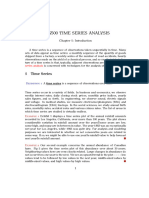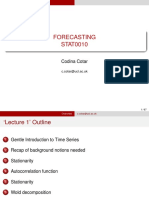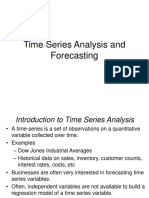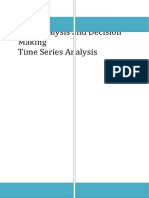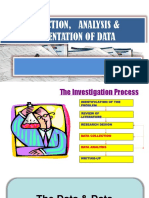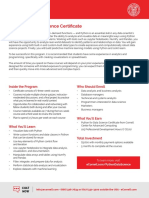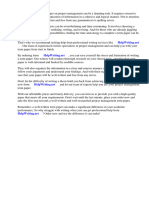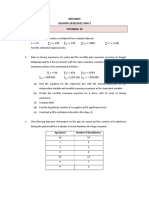0% found this document useful (0 votes)
18 views8 pagesTime Series Data and Forecasting
The document discusses the fundamentals of time series data and forecasting, emphasizing the importance of time in analyzing data for predictions. It covers key components of time series, including irregular, cyclic, trend, and seasonal components, as well as methods for decomposition and forecasting. Additionally, it highlights the significance of stationarity and autocorrelation in time series analysis and introduces parametric methods like auto regression and moving averages for modeling time series data.
Uploaded by
ashish99998Copyright
© © All Rights Reserved
We take content rights seriously. If you suspect this is your content, claim it here.
Available Formats
Download as DOCX, PDF, TXT or read online on Scribd
0% found this document useful (0 votes)
18 views8 pagesTime Series Data and Forecasting
The document discusses the fundamentals of time series data and forecasting, emphasizing the importance of time in analyzing data for predictions. It covers key components of time series, including irregular, cyclic, trend, and seasonal components, as well as methods for decomposition and forecasting. Additionally, it highlights the significance of stationarity and autocorrelation in time series analysis and introduces parametric methods like auto regression and moving averages for modeling time series data.
Uploaded by
ashish99998Copyright
© © All Rights Reserved
We take content rights seriously. If you suspect this is your content, claim it here.
Available Formats
Download as DOCX, PDF, TXT or read online on Scribd
/ 8






















